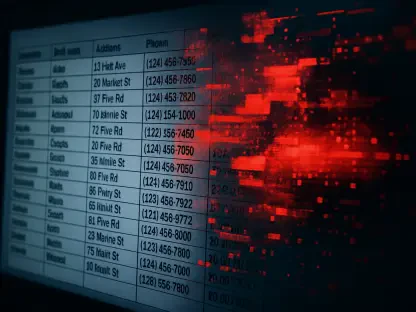Short introduction
Can you provide a brief explanation of what Return on Mitigation (ROM) is?
Return on Mitigation (ROM) is a metric used to measure the value of cybersecurity investments by accounting for the losses that have been prevented through proactive security measures. Unlike traditional ROI, ROM focuses on the benefits of mitigating potential cybersecurity risks rather than just the direct financial returns.
How does ROM differ from the traditional Return on Investment (ROI) in the context of cybersecurity?
While ROI calculates the profit gained from an investment relative to its cost, ROM evaluates the value of investments by considering how much potential loss has been averted through cybersecurity measures. ROI often misses out on the indirect benefits and hidden costs associated with cybersecurity, whereas ROM aims to capture those elements to give a clearer picture of the value added by security investments.
Why does HackerOne consider ROI to be outdated for assessing cybersecurity investments?
HackerOne believes ROI is outdated for cybersecurity because it mainly focuses on direct costs and profits, ignoring the complex nature of risks, hidden costs, and long-term benefits. This makes it unsuitable for accurately assessing the impact and value of security investments, which need to account for factors like brand reputation and customer trust.
What specific gaps or limitations does ROI have when applied to cybersecurity?
ROI has several limitations when applied to cybersecurity, including the inability to account for indirect costs like reputational damage, compliance fines, and long-term stability. It also fails to consider the savings from avoided breaches and does not provide a comprehensive understanding of the true financial impact of security incidents.
How does ROM provide a more comprehensive understanding of cybersecurity investments?
ROM offers a more comprehensive understanding by including both direct and indirect costs and savings. It factors in mitigated losses, such as costs related to data recovery, legal fees, and reputational damage, which paints a fuller picture of the financial benefits derived from cybersecurity measures.
What are some of the hidden costs and savings that ROM accounts for?
Some hidden costs and savings ROM accounts for include data recovery expenses, legal and compliance fees, costs associated with business disruptions, forensic investigation costs, and increased insurance premiums. It also considers the value of maintaining customer trust and brand reputation, which are crucial for long-term business success.
Can you give examples of how ROM has successfully reframed cybersecurity as a value driver?
ROM has successfully shown that proactive security measures can significantly reduce potential losses from cyber incidents. Companies using ROM can demonstrate that investments in cybersecurity directly contribute to financial stability and resilience by avoiding costly breaches and maintaining customer trust, thereby framing cybersecurity not as a cost center but as a critical value driver.
Can you explain how to calculate ROM using the formula provided?
To calculate ROM, you use the formula: ROM = (Total mitigated losses – Cost of investment) / Cost of investment x 100. You start by determining the total losses that have been prevented due to cybersecurity investments, subtract the cost of those investments, and then divide by the investment amount. The result is then multiplied by 100 to get a percentage value.
What are the key elements that need to be included when calculating ROM?
Key elements to include when calculating ROM are data recovery costs, legal fees, compliance fines, business disruption costs, forensic investigation costs, increased insurance premiums, and third-party incident response costs. Additionally, you should consider the loss of customer trust and the impact on brand reputation.
How do you estimate the total cost of mitigated losses, such as data recovery costs or reputational damage?
Estimating the total cost of mitigated losses involves analyzing past incidents, industry benchmarks, and expert assessments. Data recovery costs can be estimated based on previous recovery efforts or market rates for data recovery services. Reputational damage can be assessed through market research, customer sentiment analysis, and the impact on revenue and customer retention rates following a breach.
How can CISOs use ROM to better communicate the value of cybersecurity investments to executives?
CISOs can use ROM to articulate the financial benefits of cybersecurity investments in terms of avoided losses and risk mitigation. By presenting ROM data, they can demonstrate how proactive security measures directly contribute to financial well-being and align with the company’s strategic goals, making it easier for executives to understand and support cybersecurity spending.
What challenges do CISOs face when trying to justify cybersecurity spending, and how does ROM help overcome these challenges?
CISOs often struggle to justify cybersecurity spending because traditional metrics like ROI do not capture the full value of security investments. ROM helps overcome these challenges by providing a framework to quantify the benefits of risk mitigation and prevention, making it easier to present a compelling case to executives and secure necessary funding.
How does using ROM impact the decision-making process during budget meetings?
Using ROM in budget meetings shifts the focus from viewing cybersecurity as a cost to understanding it as an investment that generates significant value through loss prevention. This perspective helps decision-makers see the long-term financial benefits of robust cybersecurity measures, leading to more informed and strategic budget allocation decisions.
What are the potential long-term benefits for a business that adopts ROM over ROI?
Businesses that adopt ROM can achieve long-term benefits such as enhanced financial stability, improved customer trust and loyalty, stronger brand reputation, and reduced risk of costly breaches. By accurately capturing the value of cybersecurity investments, companies can make more strategic decisions and build a more resilient security posture.
How can technologies, like the HackerOne AI copilot platform Hai, assist in ROM calculations?
Technologies like the HackerOne AI copilot platform Hai can assist in ROM calculations by automating data analysis, estimating costs, and generating reports. Hai can analyze code for vulnerabilities, predict potential losses, and help CISOs prepare compelling narratives and presentations for budget meetings, streamlining the entire ROM calculation process.
In what ways does Hai streamline the process for security leaders, particularly in preparing for budget meetings?
Hai streamlines the process by quickly providing accurate cost estimates, identifying potential risks, and generating comprehensive reports that highlight the financial impact of cybersecurity investments. This allows security leaders to present clear, data-driven arguments to support their budget requests and demonstrate the value of continued investment in cybersecurity.
How does a cybersecurity breach impact customer trust and retention rates?
A cybersecurity breach can significantly impact customer trust and retention rates, as customers may lose confidence in a company’s ability to protect their data. This can lead to a loss of business, increased churn rates, and diminished brand loyalty, ultimately affecting the company’s revenue and market position.
What role does brand reputation play in the overall value of cybersecurity, according to ROM?
Brand reputation plays a crucial role in the overall value of cybersecurity, as a strong reputation can attract and retain customers, increase market share, and enhance business credibility. ROM accounts for the indirect benefits of maintaining a positive brand image, highlighting how proactive cybersecurity measures contribute to long-term success and financial stability.
Do you foresee ROM becoming the standard metric for assessing cybersecurity investments in the industry?
Yes, ROM has the potential to become the standard metric for assessing cybersecurity investments as it provides a more accurate and comprehensive view of the value generated by proactive security measures. As organizations increasingly recognize the limitations of ROI, ROM offers a more effective way to quantify the financial impact of cybersecurity, making it a valuable tool for decision-making.









